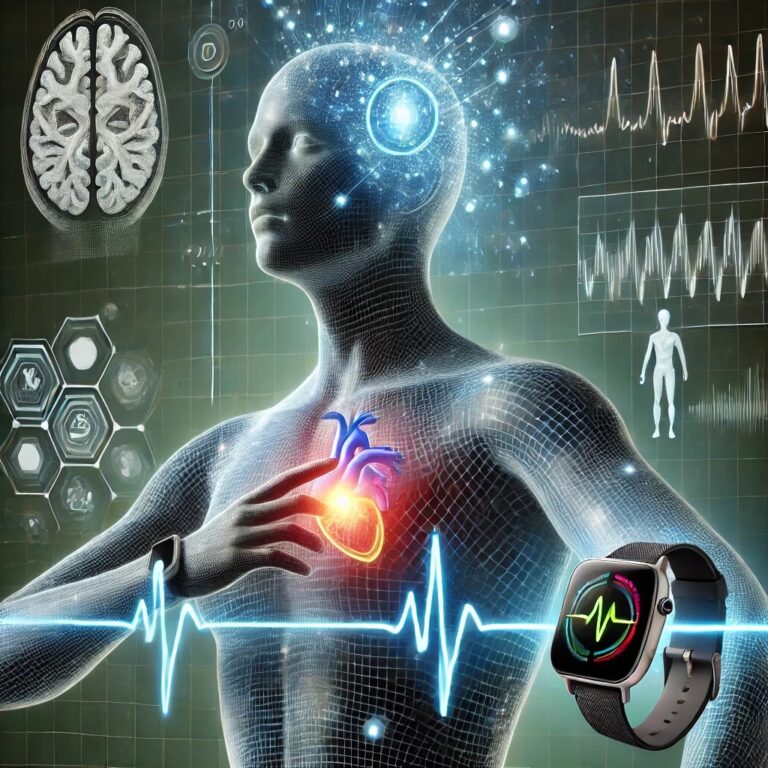How to Breathe to Live
The American Lung Association was right, when you can’t breathe nothing else matters. Breathing is something we do every day and maybe even take for granted. But did you know that changing your breath can change how you feel?

Throughout pharmacy school, I volunteered with the American Lung Association. I learned from that experience they have a tag line— “when you can’t breathe, nothing else matters.” A decade later and I could easily relate to this sentiment when I lost my breath. Admittedly, up until I lost my breath I never gave breathing much thought at all. I inhaled and exhaled on auto pilot all the days of my life. That changed when I started getting multiple respiratory infections and found myself with a reactive airway and new diagnosis. I felt constantly breathless and could no longer draw a satisfying inhale. The air I did manage to gulp in pumped up into my chest and hung out. It perpetually seeped out little by little, but always kept my lungs somewhat inflated. An avid runner, I found myself unable to continue because I didn’t have enough air. I was in deep; no running meant no inner calm and this paired with steroids made for some long nights.
I stepped onto my yoga mat out of desperation and there I met my breath for the first time. I moved my body and did the work until there was nothing left to do. I laid down and experienced savasana. I felt this sense of heaviness, almost melting, and the air moved in and out freely. Respiration is the only bodily function under both conscious and unconscious control. Breathing, is an interaction between the body and environment, amongst organs, cell to cell, and body to mind. It connects us to nature, each other, and ourselves.
The interconnectedness and mysterious nature of the breath has enthralled cultures for centuries. Breath is typically associated with life, quite simply because we can’t live without it. In yoga, prana is a Sanskrit term derived from pra-, a prefix meaning before, and an, a verb meaning to breathe, to blow, and to live. Prana refers to the vital life force of nature. In yoga, pranayama (i.e., breath control) practice is thought to increase sensitivity to the subtle body and its energetics. Many cultures have likened breath to spirit and even the wind (2). In Judeo-Christian tradition, God is the source of all breath, life, and inspiration. The Hebrew word ruach refers to the breath of life, which God breathed into Adam’s nostrils for him to become a living being. In the New Testament, the breath was used by Jesus to bestow on His apostles the Holy Spirit—only in Greek it is pneuma. The breath—a life force that animates in these examples Adam and Jesus’ Apostles. For many cultures, breath, soul, and spirit are likened to understanding.
The Process of Respiration
Physically, breath is used to oxygenate tissues of the body through processes facilitated by the respiratory system. There are 3 parts to providing oxygen, the life-giving respiratory compound, to the body: 1) ventilation, 2) perfusion of gas exchange (i.e., taking in oxygen and releasing carbon dioxide), and 3) circulation to carry oxygen to tissues throughout the body. One’s nostrils inhale air from the environment to the lungs as the diaphragm moves down creating a pressure shift that draws these gases into the body. This is ventilation. Once in the lungs, air diffuses through the alveoli (i.e., perfusion of gas exchange) and oxygen is carried via hemoglobin within the blood to tissues of the body while carbon dioxide is carried away and expired out of the body (i.e., circulation). Under normal conditions, rate of respiration is proportional to heart beat at 1:4. However, breath depth and pace will match exertion the body is under with respiratory rate specifically responding to levels of carbon dioxide, not oxygen. Over-breathing often occurs with anxiety and while it raises oxygen levels, it paradoxically does not improve tissue oxygenation. Over-breathing decreases carbon dioxide and it is carbon dioxide that determines whether oxygen is released from hemoglobin into tissues throughout the body. When muscles are deprived of oxygen, they produce lactic acid and may feel “achy.”
The phenomenon of respiratory sinus arrhythmia demonstrates the connection between respiration and the nervous system whereby the heart beats faster with inhalation and slower with exhalation. Inhalation activates the sympathetic portion of the autonomic nervous system having a stimulating effect. Conversely, exhalation activates the parasympathetic nervous system and exerts a calming effect. Heart rate variability (HRV) is the difference in heart rate during the inhale and the exhale (1). HRV is a measurement associated with health, stress, and cognitive function where higher scores are better. HRV can be improved with long slow exhales. Deep slow breathing also stimulates the vagus nerve, which results in a calming response.
The process of breathing gives a lot of stabilization as it holds us up in gravity offering levity and support of our spine (1). The primary muscle involved in breathing is the diaphragm, but, many accessory muscles work to support it as well (e.g., intercostal, abdominal, chest, neck, and any muscle attached to the rib cage). The diaphragm separates the thoracic from the abdominal cavity—it moves up and down, which creates pressure changes that bring air outward and inward, respectively. Breathing is the foundation of deep core stability. The deep core box muscles (i.e., diaphragm, transversus abdominus, pelvic floor, and multifidus) are responsive to the breath moving up and down, in and out. With each movement of the deep core box muscles, the pressure in the abdominal cavity shifts and supports our spine. Effective breathing requires muscles to hold the tension and express both suppleness and stability. The breath moves our entire body and can be used to stretch, mobilize tissues, and augment malleability.
In “Breath: The new science of a lost art” by James Nestor, he makes the case that breathing as a lost art has culminated in loss associated with many consequences (3). After listing all of the ways in which modern humans have lost the ability to breathe effectively and their corresponding consequences, Nestor concludes with recommendations to 1) breathe in and out through the nostrils, 2) breathe as slow as possible, and 3) blow out as much air as possible on the exhale.
Mouth breathing, is incredibly damaging. It contributes to periodontal disease, halitosis, and cavities not to mention promotes snoring and sleep apnea. Nasal breathing has many health benefits and using the nose promotes opening of the nasal cavities. The act of chewing is critical to maintaining skull integrity. With an increase in ultra-processed foods and commensurate decrease in the act of chewing, the human skull has dysevolved to have smaller sinuses, mouths, and throats. Slow breathing maintains healthy levels of tissue oxygenation—as noted with issues from over-breathing. It turns out that a long exhale can also improve lung capacity to take in deeper breaths and augment accessory muscle function.
Breath Control Practice (i.e., pranayama)
I had a teacher who posited “if your emotions can change your breath, why can’t it work the other way around? Use your breath and change your emotions.” Think about how deep concentration may lead to holding the breath, or how crying can result in gasping breaths. If we control how we breathe, can we influence how we feel? In general, breathing into the belly will create a calming effect while breathing into the chest will have an activating effect. Literally hundreds of years of traditions and many cultures have noted key elements of the breath that are thought to correlate with health, wellness, and vitality.
The Hatha Yoga Pradipika points out that the focus of pranayama is breath retention and the inhalation and exhalation are means of inducing retention (4). The rationale of focus on retention relates to aiming for longer time to assimilate prana, which relates to more time for the exchange of gases in the cells. Controlling fluctuations of the mind can be linked in yogic tradition with pranic restraint (i.e., breath control practice). By concentrating on the breath, one can still the mind. The natural breath is the full, healthy, free, and uninhibited breath we were born with that unfortunately is likely not in its original design state due to poor posture, stress, clothing, and many aspects of modern day living (5). The natural breath may be difficult to discern but the process of doing so begins with observing the breath just as it is without trying to change it. Observations of the inhale may give insight into how life is embraced and an exhale may reveal the ability to let go.
Diaphragmatic breathing should feel deep and satisfying. It is breathing and creating expansion three dimensionally into the back, front, and sides. The full yogic breath (also called deergha swasam breathing) is a 3-part breath and is a foundational practice of pranayama. To complete a breath round of the full yogic breath, inhale 1/3 into the belly, 1/3 into the mid-chest, and 1/3 into the top chest. On the exhale, release the diaphragm pressing the belly inward and upward, continuing the exhale by relaxing the midchest followed by the top chest. This experience can be enhanced by gently constricting the back of the throat to create an ocean like sound on the inhale and exhale.
Modern Day Life and Overbreathing
The habit of taking in more oxygen than needed and releasing more carbon dioxide than natural creates an imbalance that can impact physical health. The tendency to do this is typically a habit not a disease (5). Stress is the most common influencer causing one to overbreathe. Ordinarily, stress will result in shallow breathing and breathing that relies on accessory muscles versus the diaphragm. Over time, this can increase tension in the muscles of the head, neck, and shoulders. Chronically overbreathing has potential to change the pH of the blood, which may lead to physical symptoms. Some of the reported issues experienced with overbreathing include anxiety, panic attacks, headache, palpitations, fatigue, bloating, digestive issues, cold hands and feet, pins and needles, more pronounced allergies, negative menstrual symptoms, and muscle tension. Overbreathing is far more common in women than men (14% versus 2%).
Everyday life has its challenges. In a world full of yang energy, tapping into the yin can be difficult. But, listening to the breath can help. Taking time to learn about the nature of your breath by observing it in its current state can be truly informative in a world full of noise. Understanding can develop and offer insights into the deeper aspects of the inner life, which can be used to discern the outer world. Pranayama practice offers time tested strategies to cut through the conditioning of one’s breath habits over time in an effort to reconnect with the natural breath in its original design—free, balanced, uninhibited, and full.
Think of breath control practice as gearing up for game day. It’s a tool that can help with self-regulation so that when needed it is available. Pranayama is not a means of control, even though the name “breath control practice” implies otherwise. Rather, it is a process of discovery and a tool that can be used to restore balance if needed. It is an excellent example of tradition that has been back by science repeatedly. The breath is the connection of body to mind and a means of exploring the deeper realms of self. When things get overwhelming, stress is high, and “the thing”—whatever it may be—feels too hard to overcome, the breath is a wonderful friend who is excellent at bringing you back to the present moment and reminding you that in this moment, you are ok.
References:
1. Hinsley, L. Anatomy Bites. www.anatomybites.com. [accessed 1/19/23].
2. Oxley R, Russell A. Interdisciplinary perspectives on breath, body, and world. Body Soc. 2020;26:3-29.
3. Nestor, James. Breath: The new science of a lost art. 2020; Riverhead Books. Penguin Random House: New York.
4. Swami Muktibodhananda. Hatha Yoga Pradapika. 2016. Yoga Publications Trust, Munger; Bihar, India.
5. Keller, Doug. Refining the breath: The Yogic Practice of Pranayama. 2018. Swatantrya Press.


